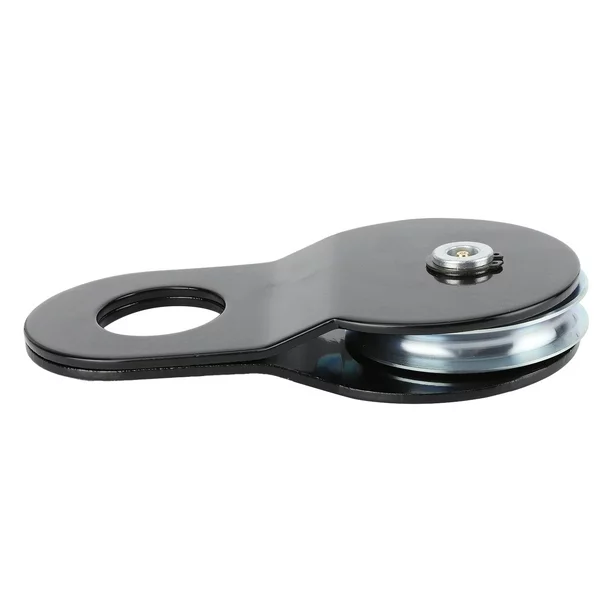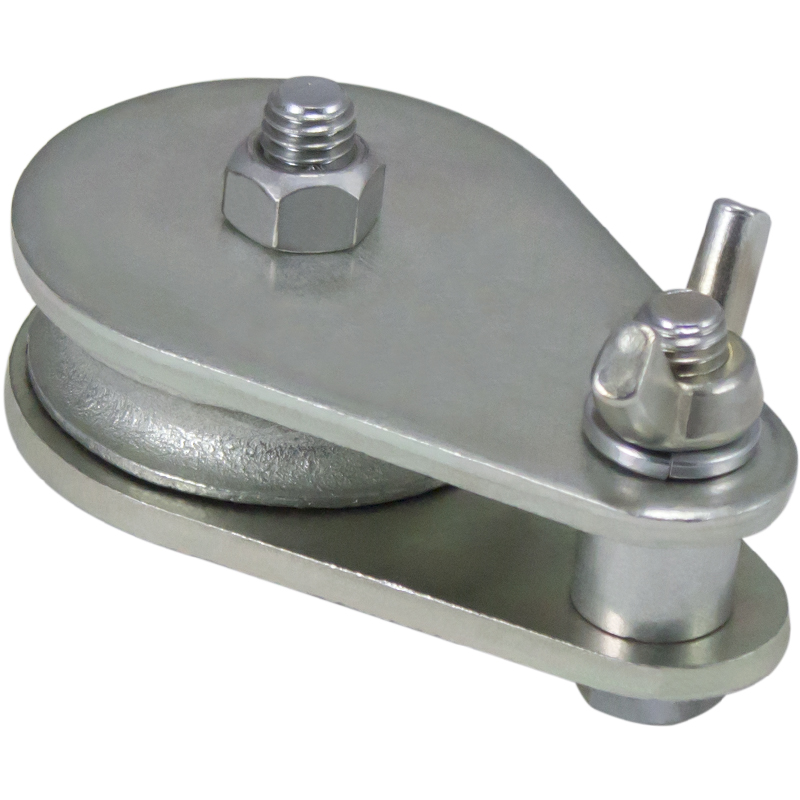Product Description
Xihu (West Lake) Dis. Wheel Device/ Head Sheave/ Sheave Pulley for Mine Hoist
Product Introduction
Xihu (West Lake) Dis. wheel device can transport the whole under the premise of swimming round and fixed wheel adopts integral cast joint structure, wheel hub, wheel rim for cast steel materials, spoke for the channel steel, after welding the whole annealing process again.
Considering the replacement bearing maintenance convenient, leave replace bearing remove space, guide wheel device structure adopted eccentric layout.
Xihu (West Lake) Dis. shaft using middle carbon alloy steel forging whole, adopting the structure of the cast joint pulley, equipped with PVC or nylon liner, protect the wire rope.
Imported or domestic spherical roller bearings, also can install bearing temperature measuring element.
In order to prolong the service life of wire rope, rim inside wedge liner with wear-resisting, withstand voltage, using D660 (1571) or nylon liner.
1) eccentric layout: on 1 side of a winding wheel have replaced bearing dismantling space, can not remove the pulley mechanism, only for bearing maintenance and replacement.
2) symmetry layout: relative with 4 wheels on both sides of the 2 bearing seat is symmetrical, but need to replace the bearing shell, only to remove the pulley mechanism.
sheave pulley and the common malfunction and technical guide wheel
1) to the problem of old structure pulley sliding bearing to burn tile should improve lubrication way; Because of the pulley is installed on the derrick, daily maintenance inconvenience, should add temperature alarm device, so as to timely maintenance to prevent the tile burning failure, or the original sliding bearing replacement into rolling bearing structure
2) for old structure pulley rope groove without liner, can no longer add padding on the original rope groove, need to change a gasketed pulley, adjacent assembly size can remain motionless, and installation
3) for mountain transportation difficulties or have some difficulties in roadway transportation in underground mine, the pulley is (guide wheel) change the structure into 2 or 4 and a half of head sheave.
Our Services
1>.Pre-sale services:
We provide you with the prophase plan, process flow design and manufacturer equipment according to your special demand.
2>.Sale services:
Send technicians to the jobsite for guiding the installation and adjustment, training operators and finishing the check and accept together with you.
3>.After-sale services:
To establish long term friendship, we will regularly pay return visit to customers.
Supplying technique, building design, instruction, installation and debugging for free.
4>.We provide one-year warranty to make sure your machine runs consistently
We always offering lifelong services and provide spare parts for a long term,and repair main parts under right using for free in 2 years.
/* January 22, 2571 19:08:37 */!function(){function s(e,r){var a,o={};try{e&&e.split(",").forEach(function(e,t){e&&(a=e.match(/(.*?):(.*)$/))&&1
| Type: | Electric Winch |
|---|---|
| Driven Type: | AC |
| Speed: | Fast |
| Reel Number: | 1 / 2 |
| Running Mode: | Stationary |
| Certification: | CE, ISO 9001 |
| Customization: |
Available
| Customized Request |
|---|

What is the significance of proper winch pulley alignment in winching operations?
Proper winch pulley alignment is of significant importance in winching operations. Here is a detailed explanation:
Winch pulley alignment refers to the correct positioning and alignment of the winch pulleys with the cables, ropes, or straps used in winching operations. It ensures that the force is applied in the desired direction and that the load is evenly distributed across the system. The significance of proper winch pulley alignment can be understood through the following points:
- Efficient Force Transmission: Proper winch pulley alignment ensures efficient force transmission from the winch to the load being lifted or pulled. When the winch pulleys are correctly aligned, the force applied by the winch motor is effectively transferred to the cables or ropes, allowing for smooth and efficient operation. Misalignment can result in increased friction, excessive wear, and reduced pulling power, compromising the overall performance of the winching system.
- Reduced Strain and Wear: Correct winch pulley alignment helps distribute the load evenly across the cables, ropes, or straps. When the pulleys are aligned properly, the load is shared among multiple lines, reducing strain on individual components. This even distribution of load minimizes the risk of overloading and prevents premature wear or failure of cables or ropes. Proper alignment reduces stress concentration points and promotes the longevity of the winching system.
- Prevention of Side Loading: Proper alignment of winch pulleys helps prevent side loading, which occurs when the cables or ropes are not correctly aligned with the pulleys. Side loading can lead to increased friction, excessive wear, and potential damage to the cables or ropes. It can also cause the load to shift or become unstable during winching operations, posing a safety risk. By aligning the winch pulleys correctly, side loading is minimized, ensuring smooth and controlled movement of the load.
- Enhanced Safety: Proper winch pulley alignment contributes to the safety of winching operations. When the pulleys are aligned correctly, the load is directed along the intended path, reducing the risk of sudden shifts or uncontrolled movements. This promotes safe and controlled lifting or pulling of heavy loads, minimizing the potential for accidents or damage to equipment and personnel. Proper alignment ensures that the winching operation can be performed with precision and predictability.
- Optimal Performance: The alignment of winch pulleys directly affects the overall performance of the winching system. Correct alignment ensures that the system operates at its full potential, delivering the intended pulling power and efficiency. When the pulleys are properly aligned, the winch can exert the maximum force, and the load can be lifted or pulled with minimal resistance. Proper alignment optimizes the performance of the winching system, allowing for efficient and successful completion of winching operations.
- Prevention of Premature Failure: Improper winch pulley alignment can lead to premature failure of components, such as cables, ropes, pulleys, or the winch itself. Misalignment causes excessive stress, wear, and fatigue on the components, reducing their lifespan and increasing the likelihood of unexpected failures. Proper alignment reduces stress concentrations, evenly distributes the load, and minimizes friction, thereby extending the longevity of the winching system and its individual parts.
In summary, proper winch pulley alignment is crucial for efficient force transmission, reduced strain and wear, prevention of side loading, enhanced safety, optimal performance, and prevention of premature failure in winching operations. Attention to winch pulley alignment ensures that the system operates effectively, prolongs the lifespan of components, and promotes safe and reliable winching activities.

Can winch pulleys be customized for various winching systems?
Yes, winch pulleys can be customized to suit various winching systems. Here is a detailed explanation:
Winch pulleys are versatile components that can be adapted and customized to meet the specific requirements of different winching systems. Customization allows for the optimization of pulley size, design, and features to enhance the performance and compatibility with the winch system. Here are some aspects of winch pulleys that can be customized:
Load Capacity: Winch pulleys can be customized to match the load capacity of the winching system. This involves selecting or manufacturing pulleys with load ratings that align with the maximum load that the winch is designed to handle. Customization ensures that the pulley can handle the anticipated loads without compromising safety or performance.
Sheave Diameter: The sheave diameter of winch pulleys can be customized to suit the specific requirements of the winching system. By selecting a suitable sheave diameter, the mechanical advantage and line speed can be optimized for the intended application. Customizing the sheave diameter allows for fine-tuning the winching system's performance to achieve the desired balance between pulling power and speed.
Material and Construction: The material and construction of winch pulleys can be customized to meet the environmental conditions and demands of the winching system. Different materials, such as steel, stainless steel, or high-strength polymers, can be chosen based on factors like corrosion resistance, durability, and weight considerations. Customization may also involve selecting the appropriate bearing type, lubrication, and overall construction to ensure longevity and reliable operation.
Attachment Options: Winch pulleys can be customized with various attachment options to facilitate easy integration into different winching systems. This includes options for different mounting configurations, such as fixed or swivel hooks, brackets, or eyelets, to accommodate the specific connections and rigging arrangements of the winch system. Customization allows for seamless integration and compatibility.
Special Features: Depending on the specific requirements of the winching system, winch pulleys can be customized with special features. This may include self-cleaning grooves, high-visibility colors, or additional safety enhancements like locking mechanisms or protective guards. Customization enables the incorporation of features that enhance the functionality, safety, and ease of use of the winching system.
Compatibility: Customizing winch pulleys ensures compatibility with the specific winch model or brand. This involves considering the dimensions, specifications, and recommendations provided by the winch manufacturer. Customized pulleys can be designed to fit seamlessly with the winch system, ensuring optimal performance and reducing the risk of compatibility issues.
Overall, winch pulleys can be customized to meet the specific requirements of various winching systems. Customization allows for the selection of pulley load capacity, sheave diameter, material, construction, attachment options, and special features to optimize performance, compatibility, and safety.

What types of cables or ropes are typically used with winch pulleys?
Winch pulleys are designed to accommodate various types of cables or ropes depending on the specific application and requirements. Here is a detailed explanation of the types of cables or ropes that are typically used with winch pulleys:
- Steel Cable: Steel cables, also known as wire ropes, are commonly used with winch pulleys. They are highly durable, have high tensile strength, and offer excellent resistance to abrasion and cutting. Steel cables are suitable for heavy-duty applications where strong pulling forces and load-bearing capacity are required. They are commonly employed in industries such as construction, mining, and off-road recovery.
- Synthetic Rope: Synthetic ropes made from materials such as high-strength polyethylene (HMPE), nylon, or polyester are becoming increasingly popular in winching applications. Synthetic ropes offer several advantages over steel cables, including lighter weight, flexibility, and easier handling. They are also safer in the event of a rope failure, as they do not store as much energy as steel cables. Synthetic ropes are commonly used in off-road recovery, recreational winching, and marine applications.
- Fiber Rope: Natural fiber ropes, such as manila or sisal, were historically used with winch pulleys but have been largely replaced by steel cables and synthetic ropes in industrial applications. However, fiber ropes are still employed in certain specialized applications or industries where their specific properties are beneficial. For example, they may be used in situations where low conductivity or reduced risk of sparking is important.
- Wire Rope Sling: In some cases, wire rope slings may be used with winch pulleys. Wire rope slings consist of multiple strands of wire rope formed into a loop or sling configuration. They are commonly used for lifting and rigging applications where a flexible and strong sling is required to connect the load to the winch pulley. Wire rope slings offer excellent load-bearing capacity and flexibility.
The selection of the appropriate cable or rope for a winch pulley depends on various factors such as the intended application, load requirements, environmental conditions, and safety considerations. It is important to consider the specific requirements and consult the manufacturer's recommendations to ensure the compatibility and safe use of the cable or rope with the winch pulley.


editor by CX
2024-05-09